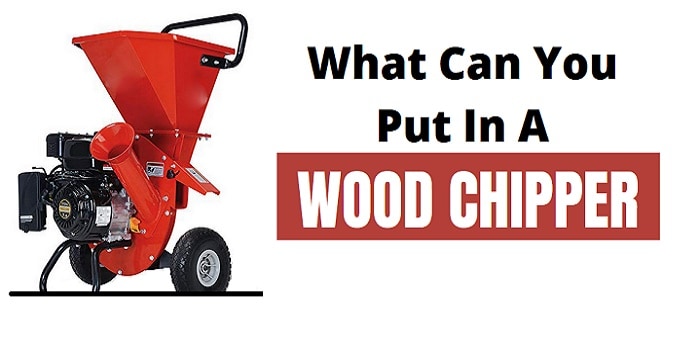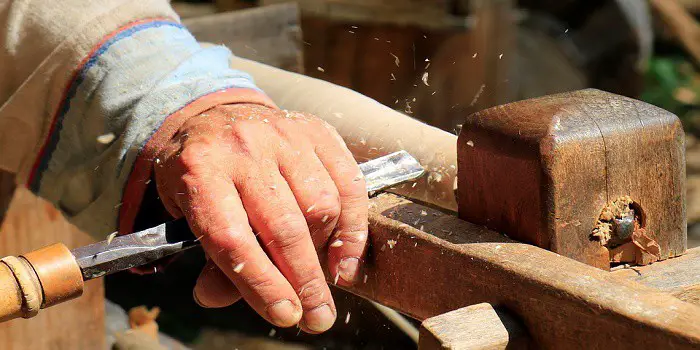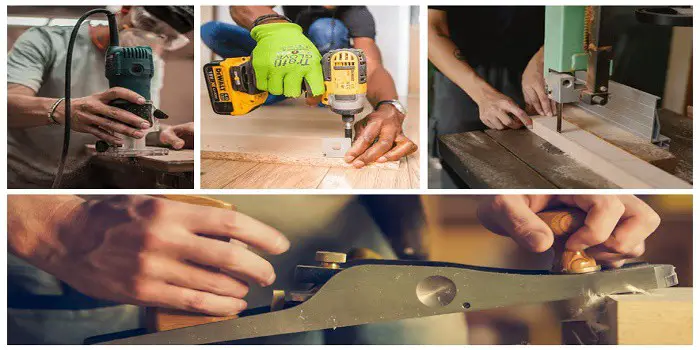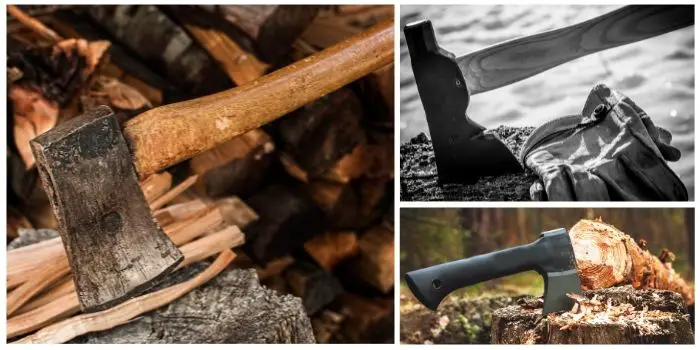
It’s not surprising that so many people use the terms hand axes and hatchets interchangeably as they appear to be the same.
And while they do have some similarities, there are enough differences to ensure that hatchets and hand axes are not the same.
What follows is an explanation of what is a hand axe and hatchet, followed by their uses, and then what makes them unique.
What is a Hatchet?
The hatchet is noticeably smaller than a hand axe in terms of the overall length, size, and girth of the handle and head.
When you first look at the design of a hatchet – it will look much like a miniature version of an axe.
This means that for chopping projects that are quite small in scale, the hatchet is a perfect choice.
The hatchet has been in use for quite some time. Today, you can often find hatchets made from a single piece of steel.
This is different from traditional hatchets which normally have a wooden handle and separate steel head.
The single-piece will often have rubber around the handle to create an easier grip.
The hatchet is primarily designed to be a go-to tool. Its small size means you can carry it around in your personal bag and use it when needed.
Plus, the back of the hatchet is normally in the form of a hammer head.
This means you can strike objects and not just chop them. The hammer head can be used for driving nails or breaking apart the wood.
However, there are hatchets that have a chopping blade on both sides.
This means you can flip the hatchet around in case one edge becomes dull.
What it is used for?
The versatility of the hatchet is considerable, which is why this tool is perfect for the following jobs.
- Splitting Firewood
- Chopping Off Small Branches
- Cutting Back Bushes
- Chopping Down Small Trees and Saplings
Because the hatchet can be easily carried, you can use it for a number of different projects that are small in nature.
It is the perfect addition to your landscaping needs if removing or chopping down small trees and saplings is part of the job.
However, it is well suited for camping given its small size, ease of use, and ability to store in small areas.
When shopping for a hatchet, it is important to look at the shape of the blade.
This determines how the hatchet will strike the wood and penetrate the surface. A flatter blade offers better contact while a curved blade will penetrate the wood deeper.
For the most part, blades with a slight curve are the most versatile.
What are Hand Axes?
A hand axe is basically a smaller version of the standard axe.
They represent the middle ground between standard axes and hatchets.
The hand axe is also known as a camping axe. It is twice the size of a typical hatchet, but only two-thirds the size of a standard axe.
The result is less striking power compared to a typical axe.
But a hand axe is more versatile and can cut angles with better precision. However, a hand axe does not have the versatility of a smaller hatchet.
What are the uses?
The hand axe has several uses. The most common of which include the following.
- Splitting Firewood
- Hewing Lumber that is Small
- Bringing Down Small Trees
It should be noted that hand axes come in different types depending on their use.
This means that the sharpness of the bit along with the angle and width of the blade will vary.
A hand axe that is used for carpentry is going to be different compared to a hand axe used for felling small trees.
Because hand axes are considerably smaller compared to regular axes, they do not have as many variations.
But they are quite versatile when out in the wood. The hand axe is quite versatile as it can handle the most typical chopping jobs while camping in the woods.
When choosing a hand axe, perhaps the most important aspect is the thickness of the shaft.
The handle should not be thicker than the head, otherwise, this will weaken the hand axe and ultimately make it more vulnerable to being damaged.
In addition, the hand axe you choose should be light, well balanced, and have a solid handle.
Most hand axes weigh about two pounds, so the one you choose should be in that range.
Remember that hand axes come in different varieties, so choose the one that best suits your needs.
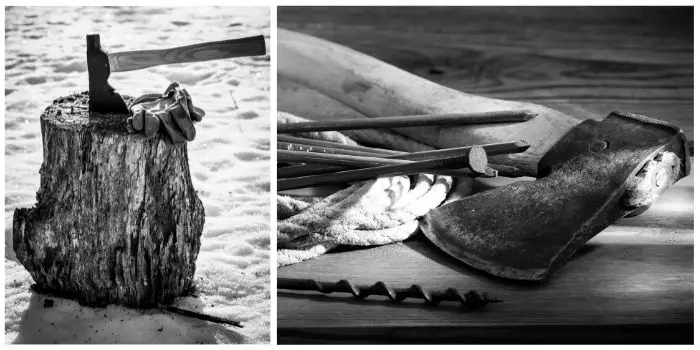
What are the Differences Between the Both?
There are a few significant differences between a hatchet and a hand axe, but the most important has to do with their relative sizes.
1- Size
A hand axe is generally larger and heavier compared to a hatchet.
Hand axes are mostly meant for jobs that require chopping, such as the splitting of firewood.
Hatchets are not quite heavy or large enough to chop like hand axes.
This means for smaller jobs and light chopping the hatchet is the right tool. For larger jobs such as chopping thicker branches, a hand axe is the right tool.
This is because of the size difference between the hand axe and hatchet.
2- Shaft Design
The head of an ax isn’t usually slanted, but rather it meets the tip at a near-90-degree angle.
Hatchet shafts, on the other hand, tend to curve forward, bringing the head near to flush with the front-most point of the lower handle.
3- The Head
The bit of a hands-on axe is generally larger and it modestly tapers from one end to the other.
Hatchets, on the other hand, have narrower heads with a smaller body and large bit, resulting in a more pronounced taper.
If the hatchet has a hammer head on the backside of the blade, then it can be used for driving nails and other hammering chores.
Plus, hatchets that are made from a single piece of steel are less likely to break.
However, when the head becomes useless, it will have to be fully replaced. Unlike a hand axe in which the head can be replaced.
FAQs
Is a hatchet or axe better for camping?
A hatchet is far more appropriate than a camping axe if you intend to walk into camp or if the space you have is limited for packing the stuff.
Hatchets are also lighter in weight and much easier to carry around than an axe.
So, in general, a hatchet is better for camping than an axe.
However, depending on what your needs are while camping, you might find that an axe would actually be better suited for your particular trip.
For example, if you need to chop a lot of wood for your campfire or shelter, an axe will be much better than a hatchet.
But, if you just need to do some light chopping or trimming, a hatchet will more than suffice.
Hatchet or axe – What’s a good survival tool?
I personally believe that a hatchet is a great tool to have in your wilderness survival arsenal.
It’s small and compact, yet still packs a punch when it comes to chopping and cutting. Plus, it’s much easier to carry around than an axe.
However, some campers and hikers prefer to bring along an axe instead because it can be used for more than just chopping wood.
A hand axe, for example, can also be used as a hammer, which could come in handy if you need to drive in some nails or build a shelter.
So, if you’re looking for a good survival tool to bring along on your next camping trip, I would recommend either a hatchet or an axe – depending on what you think you’ll need it for. Ultimately, it all comes down to personal preference.
What is the difference between a tomahawk and a hatchet?
The main difference between a tomahawk and a hatchet is that a tomahawk is designed as a multi-purpose tool while a hatchet is designed specifically for chopping wood.
Tomahawks come with a severely tapered head and bit. They are also longer and usually have a pointed end that can be used for things like chopping, prying, hammering, throwing, and self-defense.
Whereas hatchets are smaller tools that have a blunt end only meant for chopping and some additional fieldwork.
While both tools can be used for chopping wood if necessary, it really just depends on what you need it for.
If you need a multi-purpose tool that can do more than just chop wood, then a tomahawk is a better option. If you only need something to chop wood with, then a hatchet will suffice.
Final Thoughts
Both hand axes and hatchets have a similar appearance which is why they are often mistaken for each other.
On camping trips, the hatchet and hand axe are often used to chop the same type of wood, although the size and amount of wood will be different.
Essentially, both the hand axe and hatchet are similar in function. The differences lie in the wood in which they are used to chop.

Hi, I am Mark Garner a professional carpenter, woodworker, and DIY painter. I live in the small city of Peoria, Arizona as a semi-retired woodworker. I have started this blog with a simple motive to help you with my wood experience in this sector. If you like to know more about what I love doing and how it all got started, you can check more about me here.

